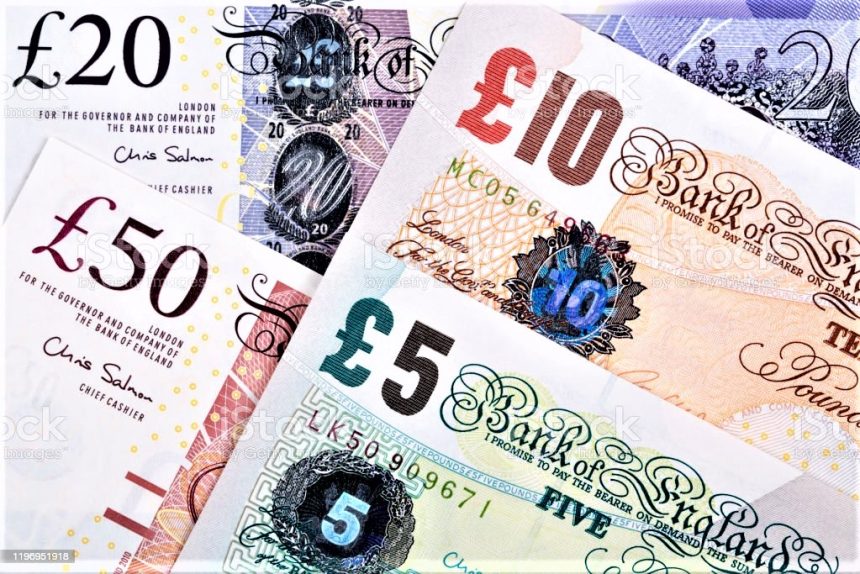The Pound Sterling (GBP) traded flat against the US Dollar (USD) on Wednesday, hovering around the 1.3300 level as traders exercised caution ahead of a critical Bank of England (BoE) policy decision on Thursday. Market participants have largely priced in a 25 basis point rate cut, which would reduce the UK’s benchmark interest rate from 4.25% to 4.00%.
Adding to the uncertainty is political maneuvering in the United States. President Trump has narrowed the list of candidates to replace Fed Governor Adriana Kugler, who resigned last week, raising speculation about potential shifts in the Federal Reserve’s independence and policy direction.
BoE Expected to Cut, But Forward Guidance Is Key
Markets widely expect the BoE to cut rates for the first time in over a year, as inflationary pressures begin to ease and labor market conditions soften. Analysts say the actual rate cut is “baked in,” but the forward guidance from BoE Governor Andrew Bailey will drive the next major move in GBPUSD.
Bailey’s Cautious Tone
Bailey has maintained a “gradual and careful” tone, citing that risks to inflation returning sustainably to the 2% target have “dissipated”. If the BoE signals additional cuts ahead, or expresses concern over economic momentum, the Pound could come under pressure.
However, if the central bank stresses data dependency and hints at a wait-and-see approach, GBP could find support around 1.3300 and even attempt a move higher if USD weakens further.
UK Macro Backdrop: Inflation and Labor Markets in Focus
Inflation Still Elevated, But Easing
UK inflation remains above the 2% target, primarily driven by food and energy costs. The Chancellor’s increased welfare spending has also stoked consumer inflation expectations, adding complexity to the BoE’s decision-making process.
However, recent price indices suggest that inflationary momentum is cooling, giving the BoE some room to ease without risking credibility.
Labor Market Weakness Emerging
Job market data shows signs of strain, particularly with employers reducing hiring amid higher National Insurance contributions. This slowdown in employment, along with declining wage growth, supports the case for policy easing.
A dovish shift in the BoE could help stimulate job growth and consumer confidence, though it may weaken the Pound in the near term.
Trump’s Fed Moves Create New Headwinds for USD
Kugler Resignation Sparks FOMC Concerns
The resignation of Fed Governor Adriana Kugler has opened the door for President Trump to nominate a replacement. According to reports, Trump has shortlisted four candidates, including economic adviser Kevin Hassett and former Fed Governor Kevin Warsh.
Market watchers fear that Trump’s picks could politicize the Fed, potentially undermining its credibility and influencing interest rate policy to align with election-year goals.
“Kugler’s resignation allows the president to further shape the FOMC in his own image,” analysts at Harris Financial Group told Reuters.
If Trump installs a more dovish or politically aligned candidate, this could trigger long-term weakness in the US Dollar, giving GBPUSD bulls a reason to push higher.
UK vs US: Policy Divergence Narrowing
While the Fed has held firm on rates, recent data (including weak Nonfarm Payrolls and slowing ISM Services PMI) suggests that the Fed may also cut rates as early as September. This brings the Fed closer in stance to the BoE and could limit the downside for GBPUSD, even if the BoE cuts first.
According to CME’s FedWatch Tool, traders now see a strong likelihood of a Fed rate cut by September, with potential for two cuts by year-end.
This narrowing policy gap between the BoE and the Fed implies that GBPUSD may remain rangebound near 1.3300, unless one central bank surprises markets.
Trump Tariffs Add Risk to USD Outlook
Trump also confirmed this week that his administration will soon impose new tariffs on semiconductors, pharmaceuticals, and chips. This protectionist turn has revived fears of trade wars, which could slow global growth and hurt the US economy.
As with earlier trade disputes, these tariffs could lead to:
- Slower US imports/exports
- Lower corporate earnings
- Risk aversion in equity markets
- Weakening consumer confidence
All these factors may pull the US Dollar lower, especially if paired with dovish Fed commentary or disappointing macro data.
Pound Performance Snapshot: Mixed Tone
Wednesday’s heat map shows that the Pound Sterling is trading lower against most major peers, though it outperformed the Japanese Yen. This mixed performance highlights the cautious stance of forex markets ahead of major policy events.
GBP vs… Change
USD +0.16%
EUR -0.13%
JPY +0.08%
CAD -0.14%
AUD -0.40%
NZD -0.39%
CHF -0.05%
The GBPUSD pair remains within a tight range, with traders unwilling to place aggressive bets until the BoE decision and Fed nominee are finalized.
Technical Outlook: GBPUSD Needs Catalyst for Breakout
GBPUSD continues to consolidate near 1.3300, showing strong support just below the handle but facing resistance around 1.3340–1.3365.
Key Technical Levels:
Immediate Support: 1.3275
Next Support: 1.3220
Resistance Zone: 1.3340–1.3365
Breakout Level: 1.3400 (psychological)
A hawkish BoE surprise or dovish Fed development could push GBPUSD through 1.3400, while a soft BoE and stronger USD could drag it toward 1.3220.
Conclusion: Pound to React Sharply to BoE Guidance and Fed Clarity
In the short term, Pound will likely remain rangebound until Thursday’s BoE rate decision. If the central bank cuts rates but maintains a cautious tone on future policy, the Pound may hold steady or even strengthen slightly.
However, dovish forward guidance, or signs of deeper economic strain in the UK, could trigger fresh GBP selling.
Meanwhile, in the US, any clarity on Trump’s Fed nominee, or shifts in rate cut expectations, will also influence the Dollar side of the equation.
Disclaimer: This blog is for informational purposes only and does not constitute financial advice. Always conduct your own research and consult a professional advisor before making investment decisions.
[sc_fs_multi_faq headline-0=”h2″ question-0=”Why is the Pound Sterling trading sideways?” answer-0=”Markets are awaiting Thursday’s Bank of England decision, and traders are reluctant to commit ahead of a potential rate cut.” image-0=”” headline-1=”h2″ question-1=”Will the BoE cut interest rates this week?” answer-1=”Yes, a 25 basis point cut to 4.00% is fully priced in by markets. The focus will be on forward guidance.” image-1=”” headline-2=”h2″ question-2=”What impact will Trump’s Fed moves have on GBP/USD?” answer-2=”If Trump appoints a politically aligned Fed candidate, it may weaken the US Dollar, supporting GBP/USD.” image-2=”” count=”3″ html=”true” css_class=””]
—









